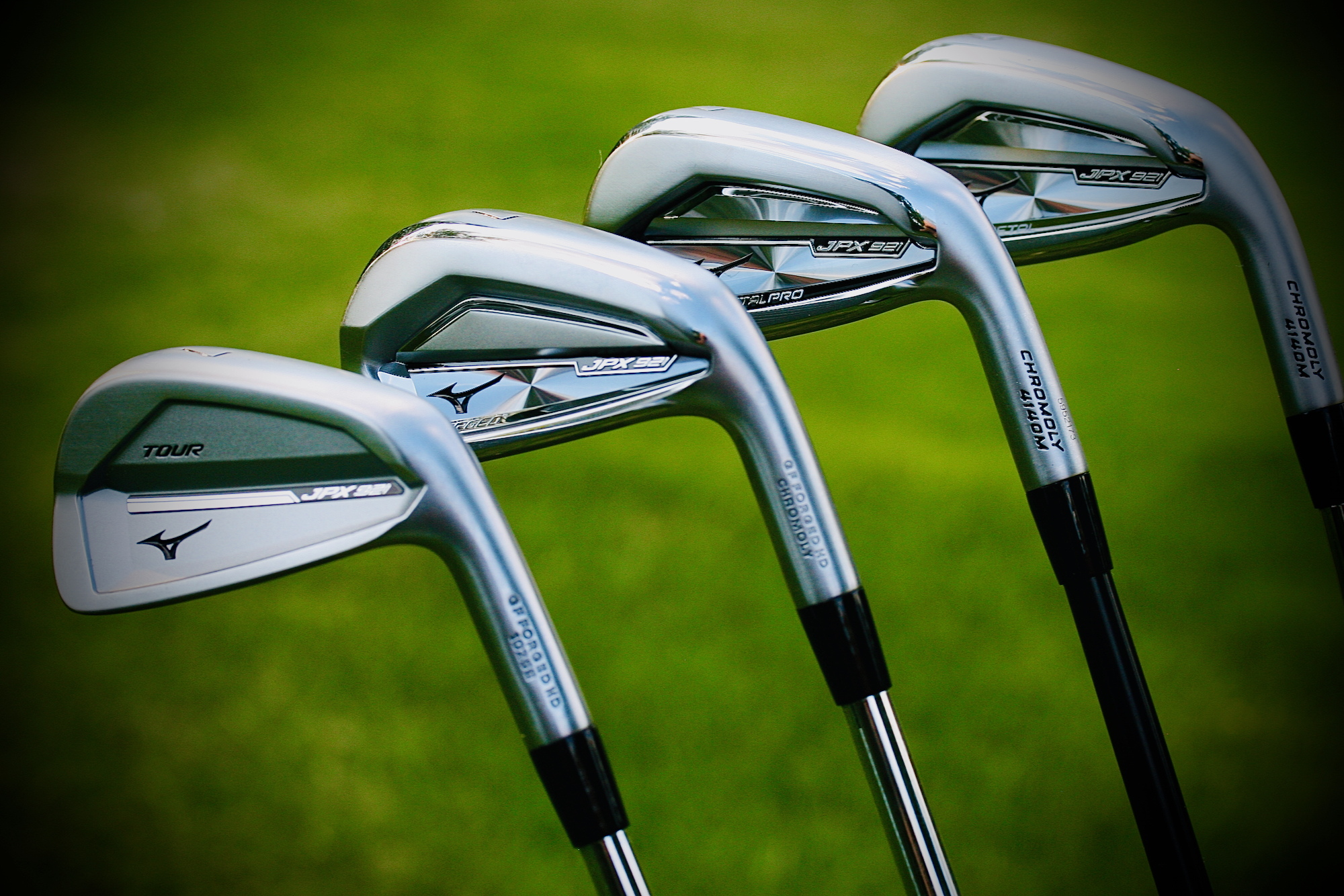
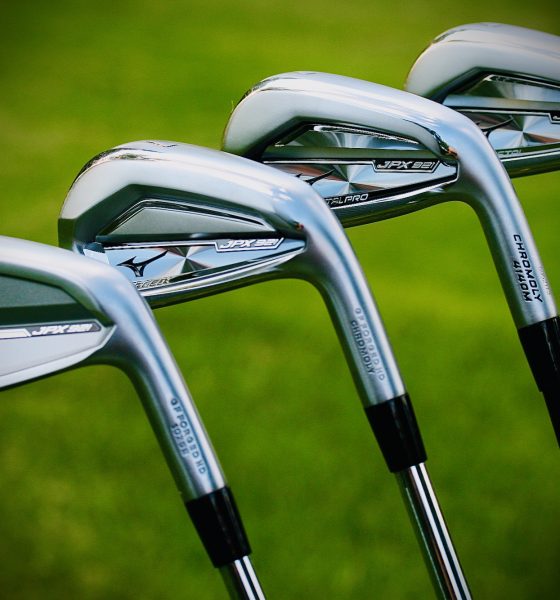
Equipment
2020 Mizuno JPX 921 Forged, Tour and JPX921 Hot Metal irons: Faster, farther, better
New for 2020 Mizuno golf are 4 sets of irons. JPX 921 Tour, JPX921 Forged, JPX921 Hot Metal and the JPX Hot Metal Pro.
It has been 10 years since Mizuno initially launched the JPX iron series with the JPX 800. Since that time, iron after iron, engineers have introduced innovations that have allowed the company to push both cast and forged iron performance to places never before seen—and they are doing it once again with the release of the Mizuno JPX 921 iron series which includes the JPX 921 Tour, JPX921 Forged, and JPX921 Hot Metal—alongside the Hot Metal Pro.
Before diving into what’s new, we have to take a look back at the 10-year history of the JPX line, because from where it began to where it is today is an almost unrecognizable transformation.
But before we get to that first, let’s ask the question: What does JPX stand for?
Answer: Japan Performance Extreme.
It was a name developed for the Japanese market as a way to introduce more aggressive, distance-driven, often cast irons to a different segment of the market. Mizuno even went as far as creating branded anime comics featuring Mizuno’s Mr. X—alongside some of its staff players including Luke Donald—seriously.
More photos and discussion in the forums.
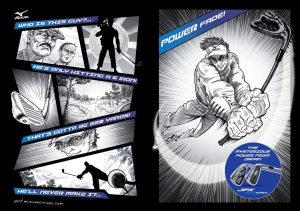
After being introduced in Japan, in 2011 the JPX line replaced the previous MX line in North America (which dated back to 2002 with the T-Zoid MX20). The JPX brand offered solid performing game improvement clubs that introduced a lot of new golfers to the generally better player-focused Mizuno. From there, a year later came the JPX Pro line to offer Grain Flow Forged construction with a game improvement twist to help golfers who still wanted a forged club with a little extra forgiveness.
Along the way, Mizuno introduced some great clubs—along with some they would rather you forget (JPX EZ, anyone?), but the brand was always been about reaching beyond Mizuno’s comfort zone and offering something to push the envelope.
The interesting thing about the JPX brand evolution is that what started in Japan became a bigger hit than they ever expected in North America, which lead to engineers creating designs more catered to the North American market to them bring back to Japan. It is an interesting change of fortune that started with the JPX 900 series and continues to this day, with the introduction of the newest JPX series, the JPX 921.
Mizuno JPX921 Forged: New processes lead to innovation
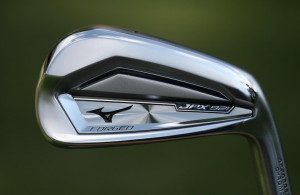
Let’s start with the biggest evolution: the JPX921 Forged.
“Faster – Forged – First”. It’s what Mizuno is using to describe its all-new JPX 921 Forged, and by appearances, they are right on every account. If we look back at the JPX Forged series, of irons or as it was previously known as the “Pro” series, they have always been about pushing the envelope of speed, shotmaking performance, and feel through material and geometry innovation. Thanks to a material and process change, the new JPX 921 Forged deliver more ball speed from a smaller chassis—it’s like they put a bigger engine into a smaller car…or have made a smaller trampoline return more energy. It takes a serious engineering step to get there.
The Materials
If you are familiar with modern Mizuno iron history then you have already heard about Chromoly when discussing the particular metal used in the construction of irons, but if you haven’t, let me help get you up to speed. It was first used in the JPX 900 Hot Metal irons to achieve improved cavity strength and face flexibility for more speed, while also still being malleable enough to bend for custom lies and lofts—a common issue with other game improvement clubs.
It was then used again to cast the JPX 919 Hot Metal and Hot Metal Pro irons to achieve higher ball speeds and increased MOI. The JPX 919 Hot Metal irons have gone on to be one of the most popular irons Mizuno has ever made and helped the company gain sizeable market share in the competitive game improvement category.
This brings us to the next big jump when Mizuno, along with its exclusive forging partner Chuo, in Hiroshima, Japan, Grain Flow forged the strong flexible Chromoly material for the first time in the construction of the faces and hosels components of the MP-20 HMB’s (2- 8-irons) for increased ball speed off the face of a hollow forged iron. It was another way to blend together process and materials innovation to build better performing golf clubs.
More photos and discussion in the forums.
The next material innovation: One-piece Grain Flow Forging Chromoly
Now for the first time, the Mizuno JPX 921 Forged is a one-piece Grain Flow Forged Chromoly iron. This allows engineers to completely re-engineer the geometry of the club to deliver a more compact players look with higher MOI and faster ball speeds thanks to a thinner face construction—oh, and don’t forget, better feel too! In the history of the JPX line, the 921 Forged is the most compact “Forged” model ever created.
This is not the first time Mizuno has used a new material to gain a performance advantage with a JPX “Forged” iron either. It was in late 2014 when Mizuno introduced the JPX 850 Forged which added Boron to the 1025e Pure Select Carbon steel to create irons that progressed the line and enabled thinner faces for more ball speed. Unlike the MP line of irons, where feel, looks, and workability take the main focus, JPX is and has always been about placing a premium on distance without sacrificing the other characteristics Mizuno irons are known for.
- Mizuno JPX921 from address: 7-Iron
- 2020 Mizuno JPX 921 sole profile: 7-Iron
As much as it seems like a simple progression, Grain Flow Forging the Chromoly steel requires extra steps to get it to where it reaches the final dimensions as a club head. Whereas all other forged Mizuno irons before have gone through two precision forging hits, the JPX 921 goes through three. This means more molds, more steps, and more precision.
The last part of the 921 Forged story is the back milling of the sole. This started with the 919 Forged and continues with the 921. Thanks to the new stronger material, the side to side measurement of the slot and cavity is more than six-percent wider than the previous model, resulting in a what Mizuno is calling a 45 percent increase in total COR area of the face. When reengineering anything single percentage points matter, and the fact that Mizuno can widen the slot by more than six percent is a very significant number—especially when you consider this is a more compact head than the previous generation.
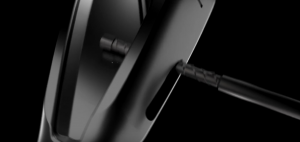
When you add it all up, what the designers and engineers at Mizuo have been able to achieve with the JPX 921 Forged will appeal to a wide swath of the golfing population. From low handicap golfers who want extra help and confidence in their irons thanks to the slightly larger shape to mid-handicap golfers that who a more compact one-piece forged club iron but aren’t quite ready for a small players cavity.
JPX 921 Forged: Specs, price, and availability
The stock components are Nippon Modus 120 in Stiff flex and 105 in regular with Golf Pride MCC+4 Grey grips. The JPX 921 Forged will only be available in right hand.
The price will be $175 per club/$1,400 for an eight-piece set.
More photos and discussion in the forums.

Mizuno JPX 921 Tour irons
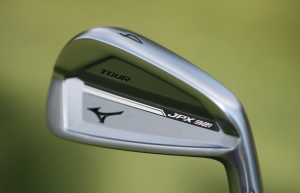
As much as the JPX Forged line is about advancing technology and materials, the 921 Tour is about subtle refinements to deliver familiar performance with improved feel and looks. Another way to say it: “Let’s not screw a really good thing up.” Even in its short time as a Mizuno iron, the JPX Tour—starting with the 900 and then the 919—could be considered one of the company’s most important irons ever designed that came along at just the right time.
To quickly rehash an old story now, when Nike left the equipment space in 2016, it left a lot of golfers on tours all over the world searching for new clubs. Some chose to quickly sign with other OEMs while some other players (Brooks Koepka included) chose to forego club contracts and just use whatever clubs they felt worked the best—it was the rebirth of equipment free agents on tour. The irons Brooks ended up using to win all for of his current majors were the 900 Tours for the first three and then the 919 Tours for his most recent PGA Championship. Not to mention they were also the top money-winning iron on the PGA Tour in 2019 by non-contracted players.
The JPX921 Tour is designed with the feel, flow, and performance of the MP series but with greater clubhead stability and a different player in mind. The MP could still be considered the “traditionalist” iron, whereas the JPX Tour caters to a more aggressive player needing a little bit extra help on occasion but still wanting a smaller looking iron.
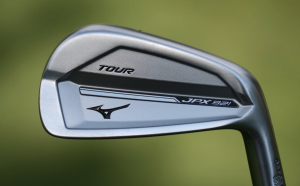
This is where Mizuno’s Stability Frame design allows the 921 Tour to offer greater forgiveness (higher MOI) than the MP-20 MMC without the multi-material construction. Designers achieved better flow by narrowing the soles in the shorter irons and ever-so-slightly increasing the width in the longer clubs—not something noticeable from address but a feature that helps with ball flight control.
The last, and quite possibly the most important part is looks and feel, and Mizuno took an old school approach to get this right for the 921 Tour. The first part was feel. To get the impact harmonics where they wanted engineers thickened the pad behind the impact area without losing the desired MOI. The original 900 offered thickness but less stability, the 919 went a bit thinner to boost MOI, and now the JPX 921 Tour is like Goldilocks finding the bowl of porridge that was just the right temperature.
So, about those looks. For the first time with the JPX series, after final CAD models were produced, they were sent to the Mizuno craftsman for final shaping before becoming master models for production. This process was always reserved strictly for the Mizuno MP line of clubs, but since the designers and engineers wanted to do everything they could to have the newest JPX 921 Tours look absolutely perfect at address and in the bag, they took every step they could to deliver on that goal. To understand that process more, check out the video below from the release of the MP-18 irons.
More photos and discussion in the forums.
JPX 921 Tour: Specs, price, and availability
The stock components are KBS S-Taper Stiff flex with Golf Pride Z-grip full cord grips. Only available in right hand.
The price will be $162.50 per club/$1,300 for an eight-piece set.
Here is another first of the JPX 921 Tour irons—no 3-iron available. Similar to how Mizuno analyzed the number of custom ordered sets to produce SKUs for the MP-20 line, the company decided it was finally time to do away with the 3 and instead offer a matching gap wedge. It’s a minor detail, but if if you are looking to add a 3-iron to your set, the 921 Forged 4-iron is a perfect three-degrees stronger and has a hotter face—just food for thought.

Mizuno JPX 921 Hot Metal, Hot Metal Pro irons
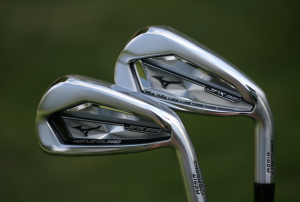
Similar to the JPX Tour, the designers at Mizuno didn’t want to mess with a good thing—they instead just wanted to reevaluate how they looked at the JPX line as a whole and make changes to suit the intended target golfers and well as make them look even cleaner. JPX irons have come a long way in the looks department since the original JPX 800 (below)
With 921 Forged moving into a smaller platform, it gave the designers at Mizuno the opportunity to do something they, along with a lot of other OEMs, have done in recent years—create a better-flowing set from top to bottom means more forgiveness where you need and control where you want it.
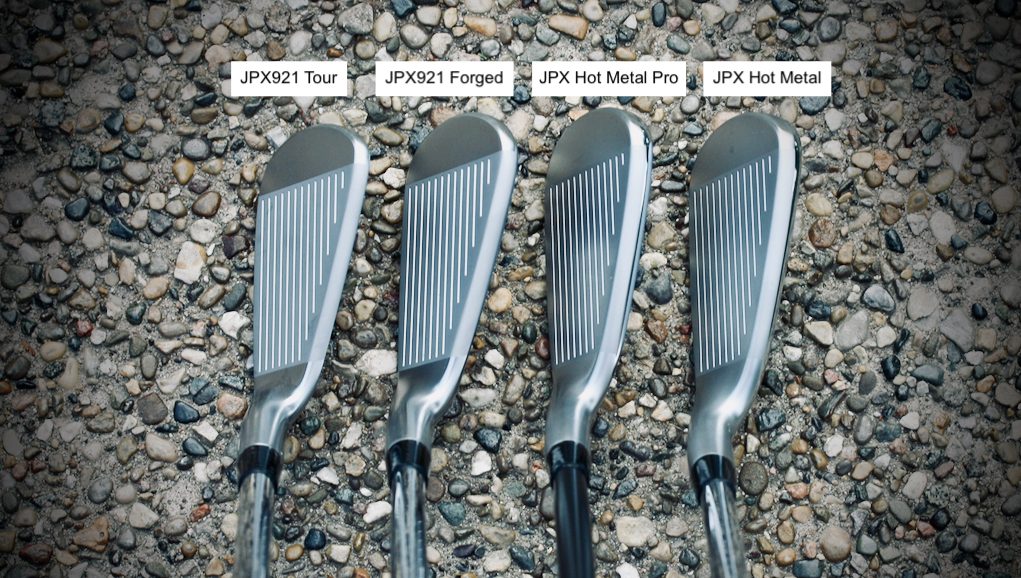
From left to right: JPX-921 Tour, JPX-921 Forged, JPX-921 Hot Metal Pro and JPX-921 Hot Metal
With the 921 Hot Metal, that means starting at the 8-iron and moving into the longer clubs, the heads lengths have gotten just a little bit bigger from heel to toe to boost MOI. This longer blade allows for a slightly lower center of gravity to accommodate the one-degree stronger lofts to add distance while maintaining peak hight and descent angles. Just like how the Forged model got smaller yet faster thanks to a material change, the material used to craft the 921 Hot Metals hasn’t changed—instead engineers changed the geometry to improve performance.
- Mizuno 2020 JPX921 Hot Metal sole
The other changes include adding three new sound ribs to the top line to make it lighter and stiffer and to enhance acoustics while also saving weight to redistribute around the head and Stability Frame.
Last but not least, we can’t talk about a game improvement iron without talking about ball speeds and face engineering. Mizuno separates itself by making the entire head including the seamless face cup completely weld-free, that’s right, one-piece construction other than the badge. The 921 has the thinnest fastest face that have ever produced
Hot Metal: Specs, price, and availability
The stock components are Steel: Nippon NS Pro 950 NEO, & Graphite: UST Recoil EXS with Golf Pride MCC+4 Grey grips. The JPX 921 Hot Metal irons will be available in right and left hand, with the standard set makeup of 4-GW.
The price will be $125 per club/$1,000 for an eight-piece set.
More photos and discussion in the forums.

Now to the Pros…
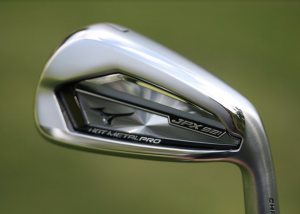
In the early part of 2019, Mizuno did something a little out of character for the usually very predictable Japanese company—it released a line extension iron mid-cycle with the JPX 919 Hot Metal Pro. Even though it was a bit of a surprise, the reaction from golfers was beyond positive. Now with all four JPX 921 series irons being launched cohesively, it will give players looking for Hot Metal ball speed in a smaller package the option right from the start.
- Mizuno JPX 921 Hot Metal Pro address – 7 Iron
- Mizuno JPX 921 Hot Metal Pro sole: 7 iron
The Pro offers all of the Mot Metal technology as the standard model, but what separates it from the standard model is the look from address, including the topline – thinner, blade length – shorter, and offset – in line with the player focused MP series.
Also, much like the standard Hot Metal, the flow was improved from top to bottom with the 7 iron being the starting point for a slightly longer blade length into the longer clubs. To be honest, you’re going to have to look very closely to notice it, but it’s there, and it’s there to help.
Hot Metal Pro: Specs, price, and availability
The stock components are Project X LZ Black 5.5 with Lamkin ST Hybrid grips. The JPX 921 Hot Metal irons will be available in right-hand only with the standard set makeup of 4-GW
The price will be $125 per club/$1,000 for an eight-piece set.

There are always more options
Like with previous generations, including MP irons going back almost a decade, Mizuno is sticking with its industry-leading matrix of shaft and grip options available at NO upcharge. However, after 2019 and growing demand for more exotic shaft options, the newly expanded Mizuno shaft line up will include a few shafts that will come with a slight upcharge. The full list of shaft options can be found at MizunoGolf.com
More photos and discussion in the forums.
- LIKE315
- LEGIT31
- WOW27
- LOL8
- IDHT10
- FLOP6
- OB6
- SHANK18
Equipment
A shocking Backstryke putter appearance + 7 interesting gear photos from the Zurich Classic
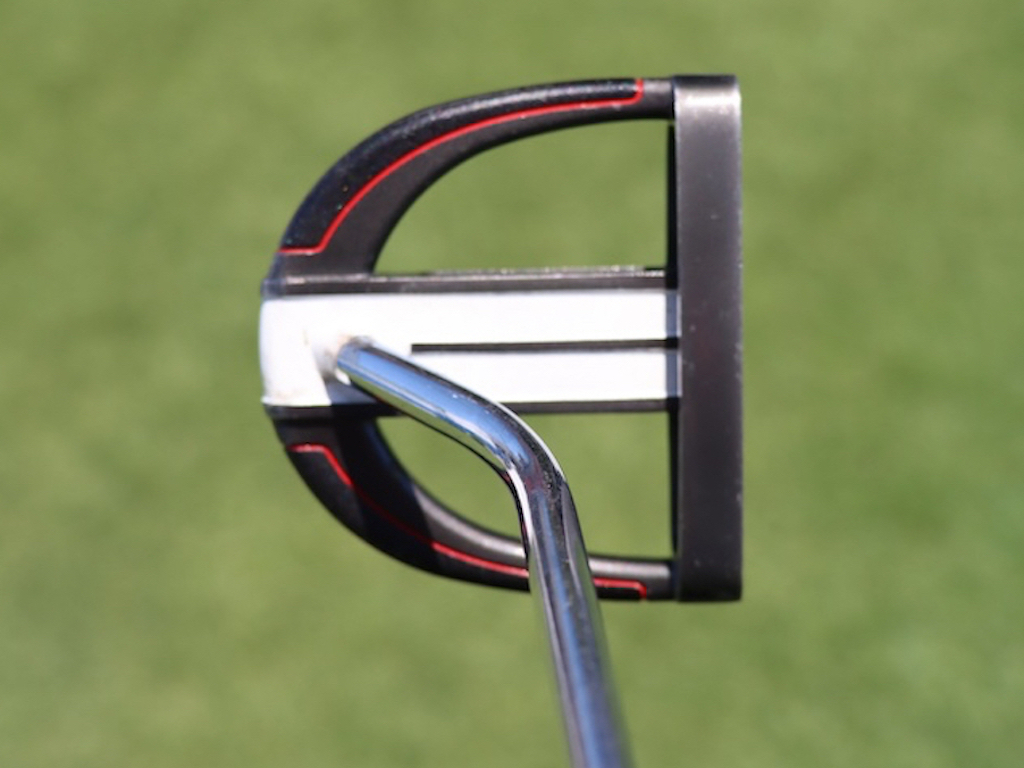
Welcome to New Orleans, where TPC Louisiana plays host to the 2024 Zurich Classic. In between breakfast beignets and nightly Creole feasts, PGA Tour players are also competing in the unique two-man format at the Zurich this week.
Although the vibes in Nawlins are a bit lighter-fare than the recent back-to-back competitions the Masters and the RBC Heritage signature event), the gear news was no less serious this week.
We spotted some recent changes from Rory McIlroy, a very rare Odyssey Backstryke putter, dove into the bag of legendary New Orleans Saints quarterback Drew Brees, and spotted Patrick Cantlay continuing to test new equipment.
Get your beads out and crack your crawfish, because it’s time for an equipment rundown from The Big Easy (meaning New Orleans, of course, not Ernie Els).
See all of our photos from the Zurich Classic here
Rory’s on-and-off lob wedge
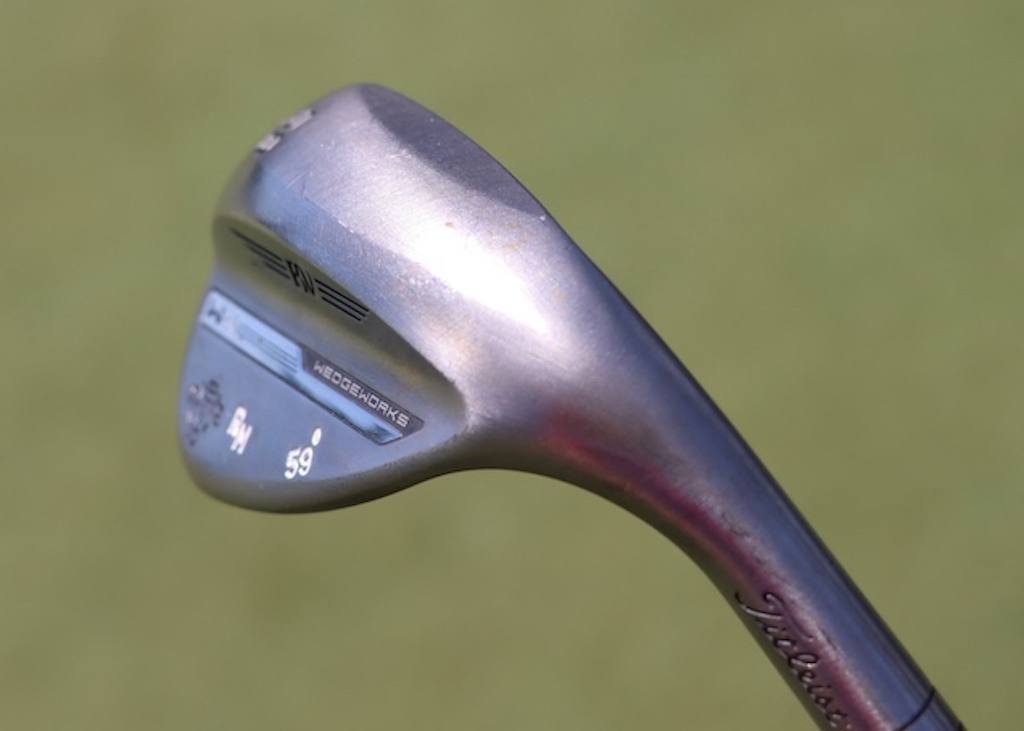
Since the end of 2023, Rory McIlroy has had an on-again, off-again relationship with a Titleist Vokey K-Grind lob wedge. In his last start, it was on, and the wedge is back in the bag again this week. We got a great look at the complicated grind that McIlroy uses.
View this post on Instagram
A full look into McIlroy’s bag above also shows that he switched out of the TaylorMade BRNR Mini Copper that he used at the RBC Heritage, and he’s back into the Qi10 core 3-wood. As we discussed last week, McIlroy will likely keep the BRNR around as a course-specific club, trading it in and out for the 3-wood.
See Rory McIlroy’s full 2024 WITB from the Zurich here
Turning Back the clock
Unless Tommy Gainey is in the field, it’s unlikely you’ll ever see Odyssey’s Backstryke technology make an appearance on the PGA Tour.
But then, when you least expect it, Russ Cochran shows up.
For more than a decade – since the 2013 Sony Open in Hawai’i – Cochran has been stuck on 599 PGA Tour starts. This week will be his 600th.
Cochran is in the field at the Zurich this week playing alongside Eric Cole, whose regular caddie is Reed Cochran, Russ’s son.
The Backstryke putter was first released back in 2010, and its unique design helps shift the axis point of the putter closer to the CG of the head. And, the putter is getting a nod this week at the Zurich Classic, thanks to Cochran’s 600th career PGA Tour start.
The putter is certainly awesome, but don’t forget to check out Cochran’s full WITB from this week.
Drew Brees with a Super Bowl winning Scotty Cameron putter
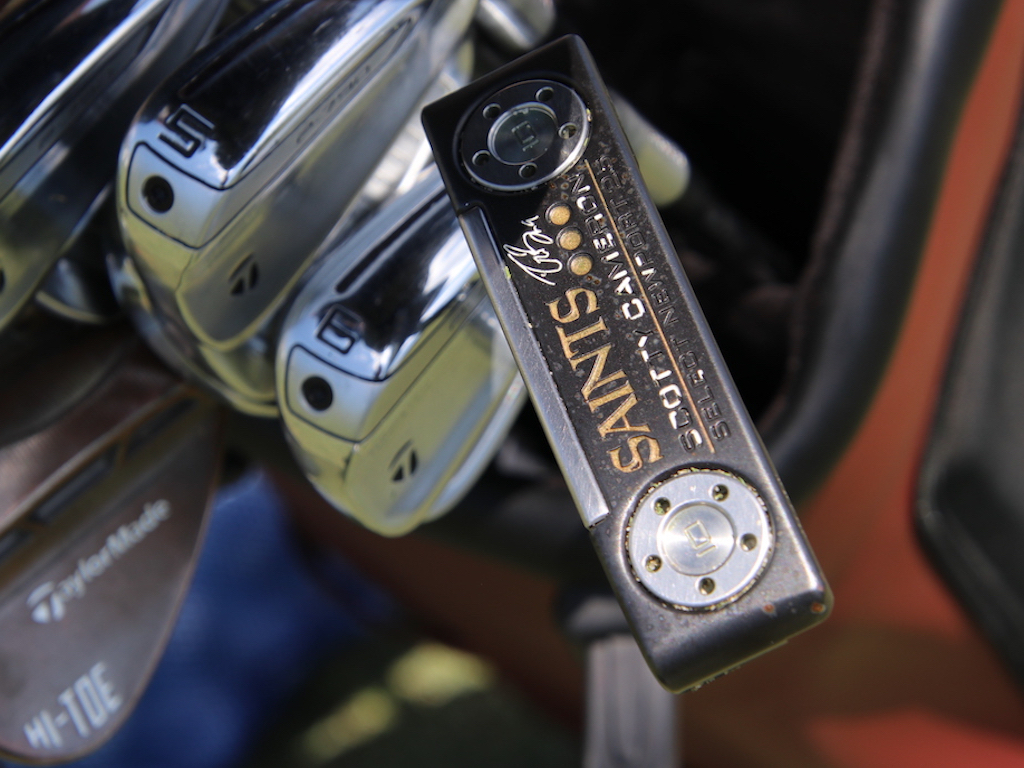
Drew Brees, a legendary retired quarterback for the hometown New Orleans Saints, made an appearance at the Zurich’s Wednesday Pro-Am, playing alongside Zach Johnson, Ryan Palmer, and current Saints QB Derek Carr.
Brees’ bag included a TaylorMade Stealth2 Plus driver, a BRNR Mini 13.5-degree, a Stealth 5-wood, a mixed set of P-790 and P-760 irons, Milled Grind Hi-Toe wedges, and a custom Scotty Cameron “New Orleans Saints” putter, which Scotty made for Brees following his Super Bowl MVP-winning performance in 2010.
View this post on Instagram
It should also be noted that Brees has his Venmo QR code as a bag tag.
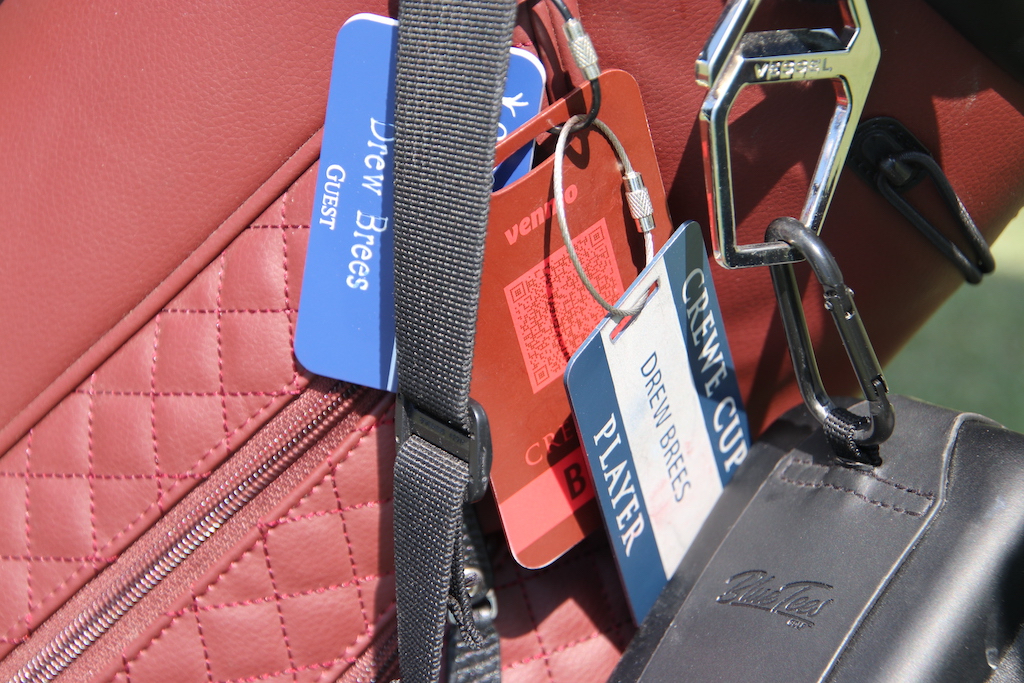
If you’re gambling with Brees on the course, just know that not having cash won’t work as an excuse.
Brilliant.
See Drew Brees’ full WITB from the Zurich here
Stricker’s unrecognizable putter
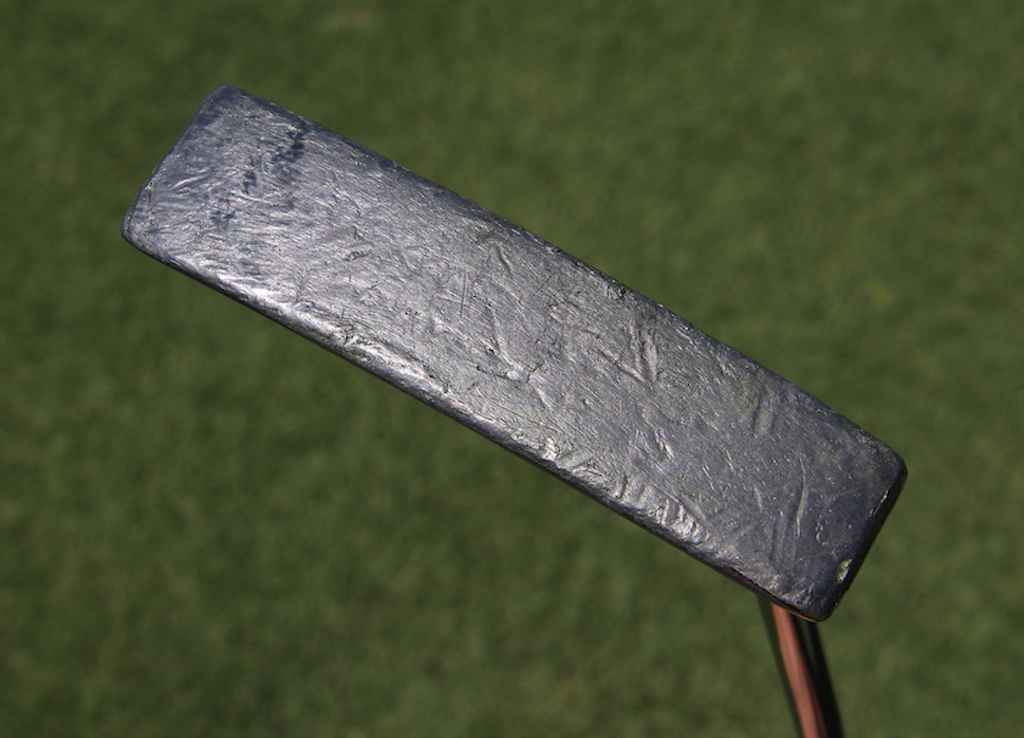
Steve Stricker has made numerous upgrades to his bag recently, including a new TSR3 driver and T100 irons, but his longtime Odyssey White Hot No. 2 putter is still going strong. It’s the most recognizable unrecognizable putter ever.
Here’s a better look at Stricker’s flatstick, which he started using back in 2007.
View this post on Instagram
Patrick Cantlay has opened the equipment-switching floodgates
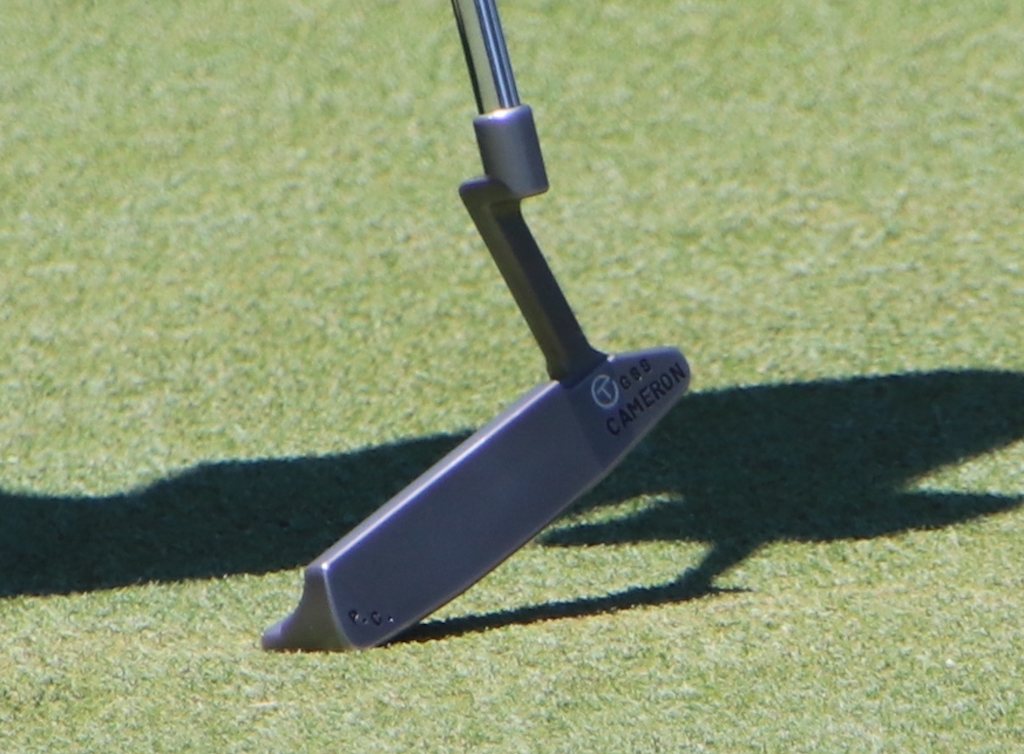
Over on the PGA Tour’s Equipment Report this week, we covered Cantlay’s recent switch into Ping Blueprint S irons, and a Titleist TSR2 driver.
Cantlay hadn’t switched irons for about seven years, so the iron switch he made at The 2024 Masters came as a shock to the norm. He simply isn’t one to change gear very often, so anytime Cantlay makes a switch, it’s news.
It seems the floodgates of equipment testing have opened up a bit for Cantlay, who was also spotted testing a custom Scotty Cameron blade putter on Tuesday this week. By Wednesday, Cantlay was back practicing with his familiar Scotty Cameron T5 Proto mallet, but it’s certainly something to keep an eye on going forward.
Daniel Berger’s custom Jailbird site lines
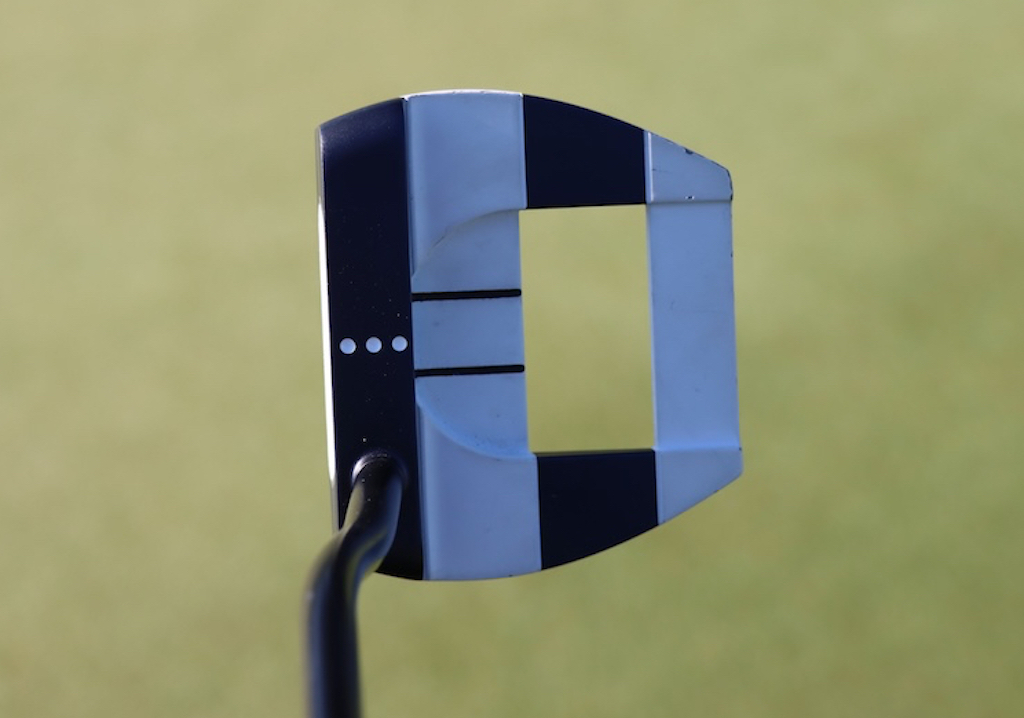
Berger, who’s currently using Odyssey’s Ai-One Mini Jailbird mallet putter, has a unique 3-dot, 2-line alignment on the crown of his navy-white-navy-white mallet putter. Looking down at the putter, it’s easy to see why this alignment system would help; it just seems impossible to set up to the ball off-center, or misaligned to the target.
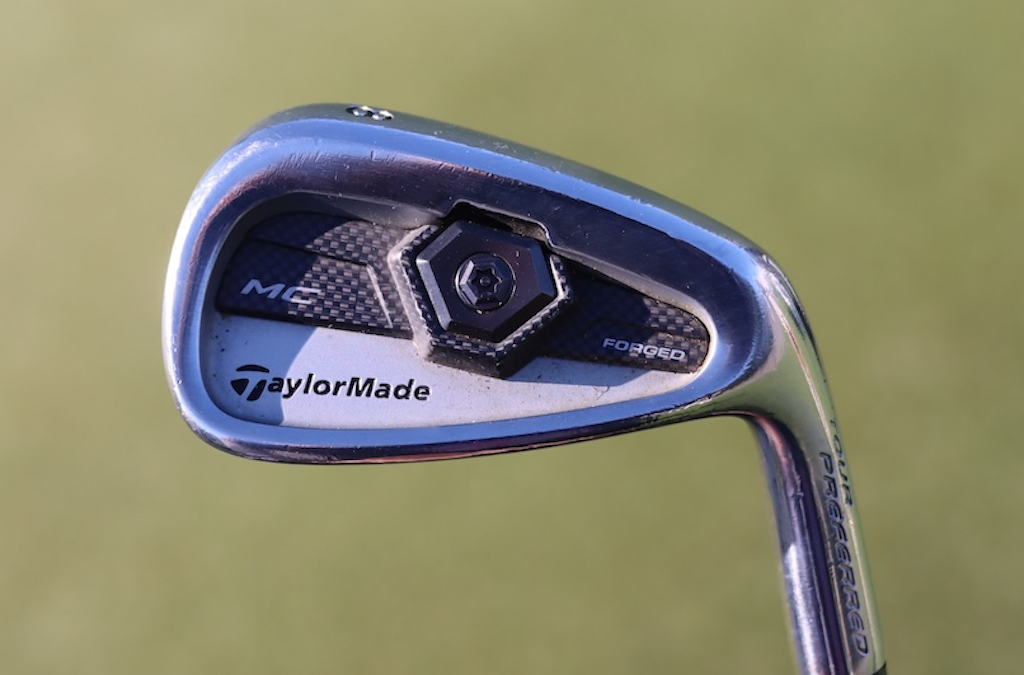
Also, for anyone worried, you can rest easy. Yes, he’s still playing the 2013 TaylorMade TP MC irons, which we highlighted in our recent “Modern Classics: Old vs. New” video testing series.
FitzMagic teams back up
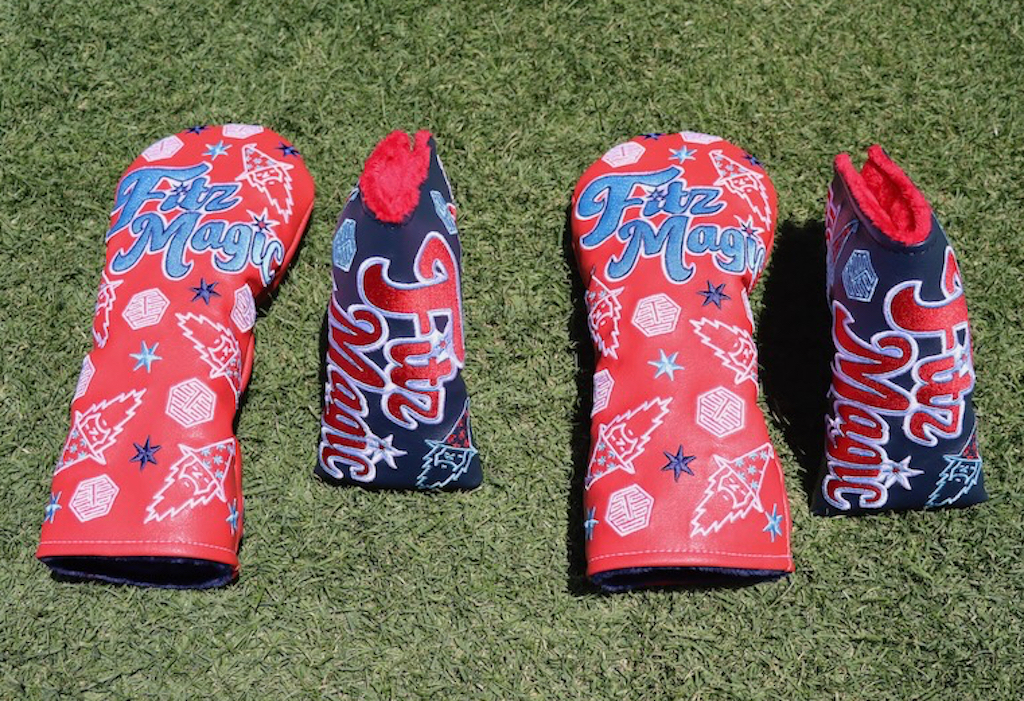
Brothers Matthew and Alex Fitzpatrick are teaming up once again at the Zurich this year, and Bettinardi Golf hooked them up with some festive “FitzMagic” headcovers to match this week.
See what else is in Alex Fitzpatrick’s WITB here
And, with that, we say goodbye to the Zurich Classic in New Orleans. Don’t forget to check out all of our photos from this week, including 30 unique photo galleries full of equipment photos.
We’ll see you next week in Texas for the 2024 CJ Cup Byron Nelson!
- LIKE4
- LEGIT0
- WOW0
- LOL0
- IDHT0
- FLOP0
- OB0
- SHANK0
Whats in the Bag
Alejandro Tosti WITB 2024 (April)
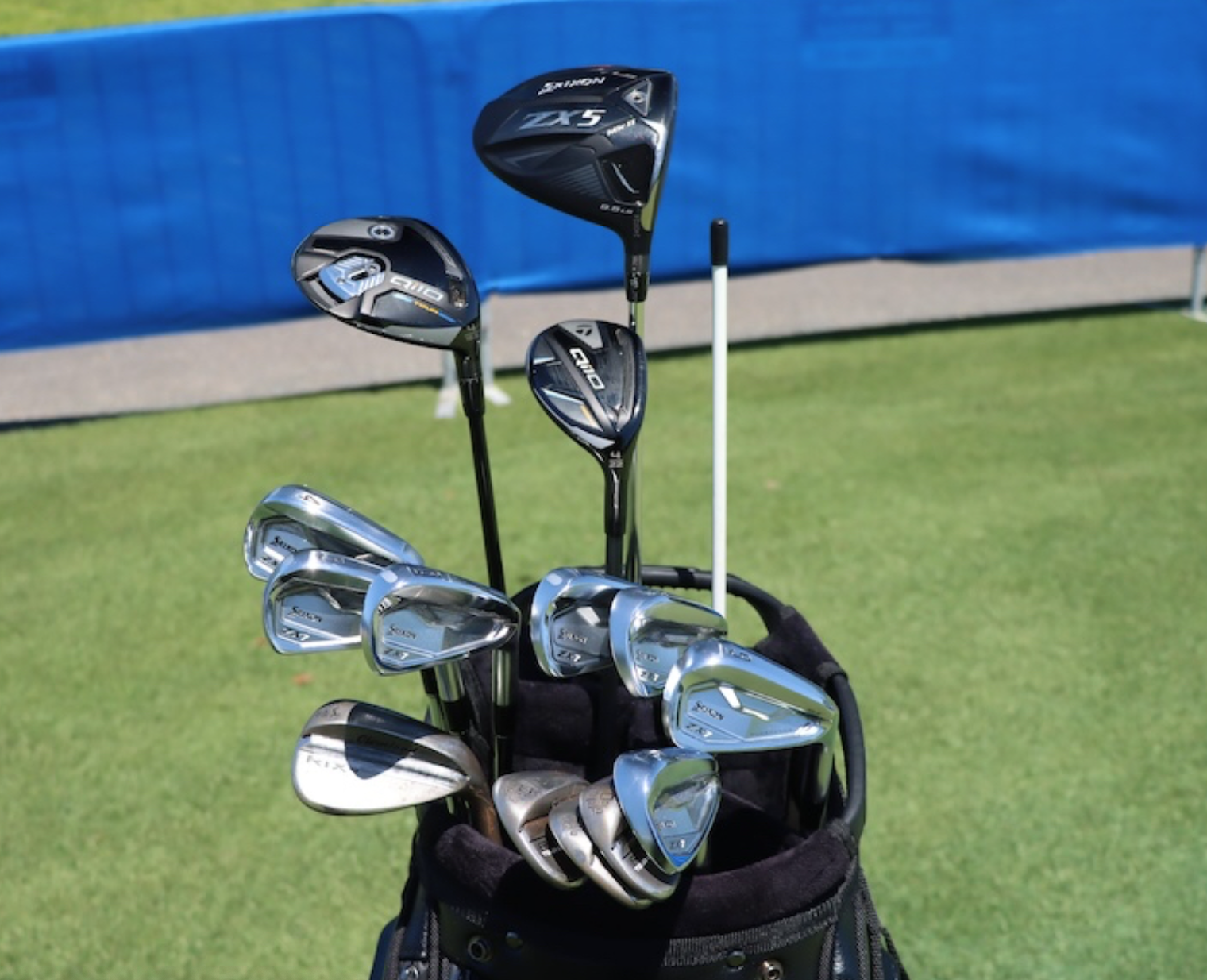
- Alejandro Tosti what’s in the bag accurate as of the Zurich Classic.
Driver: Srixon ZX5 Mk II LS (9.5 degrees @10.5)
Shaft: Project X HZRDUS T1100 75 6.5
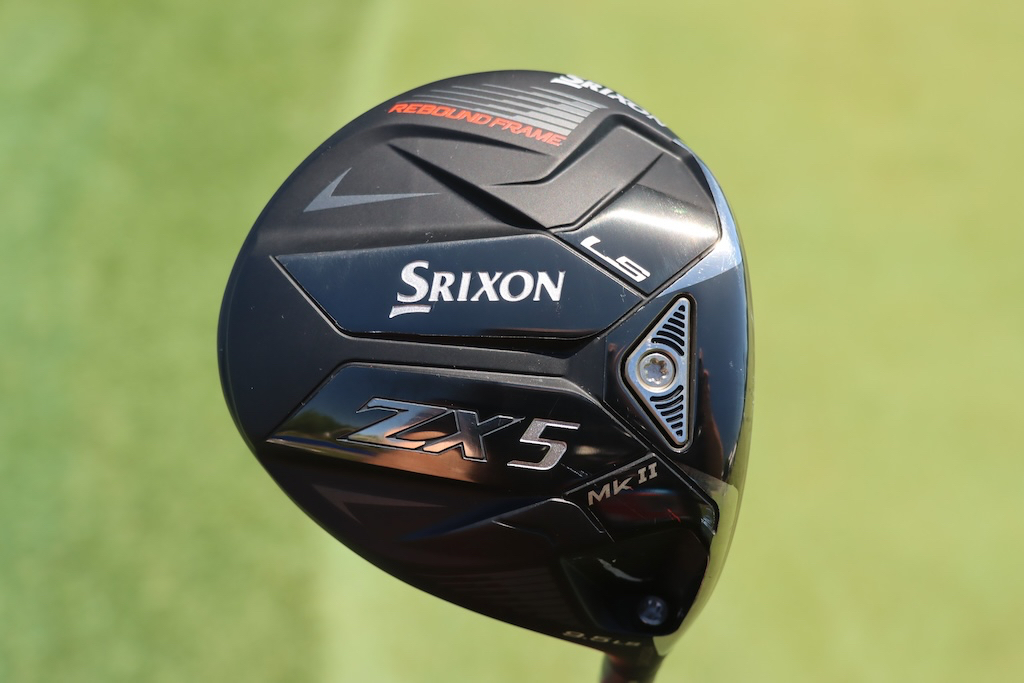
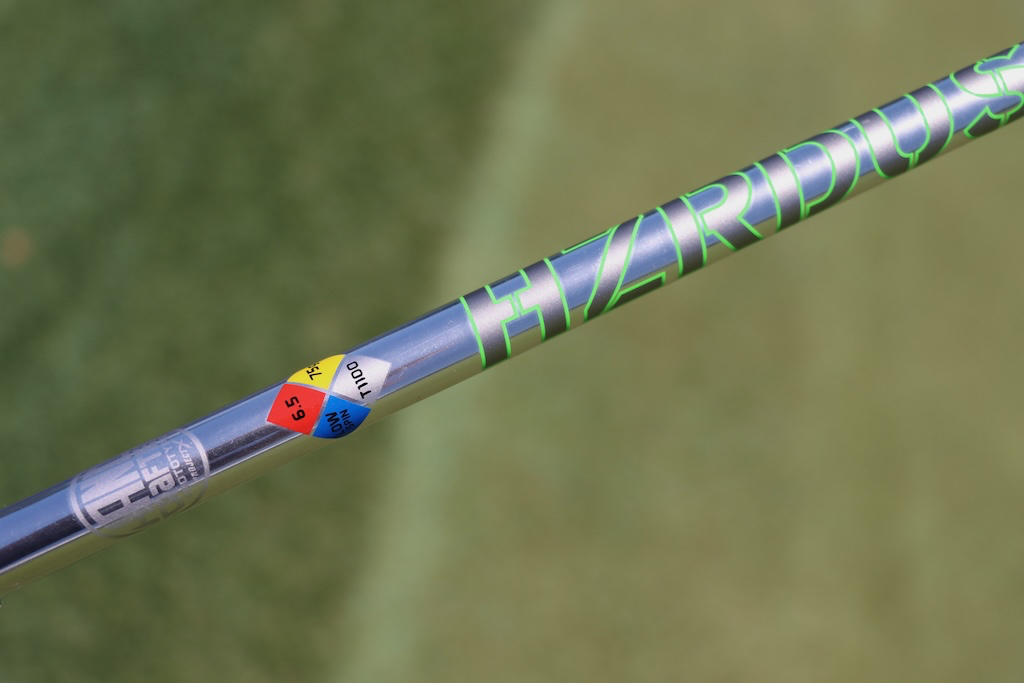
3-wood: TaylorMade Qi10 Tour
Shaft: Project X HZRDUS Black 80 TX
Hybrid: TaylorMade Qi10 Tour Rescue (22 degrees)
Shaft: Project X HZRDUS Smoke Black RDX 6.5 100
Irons: Srixon ZX7 Mk II (4-PW)
Shafts: True Temper Dynamic Gold Mid Tour Issue X100
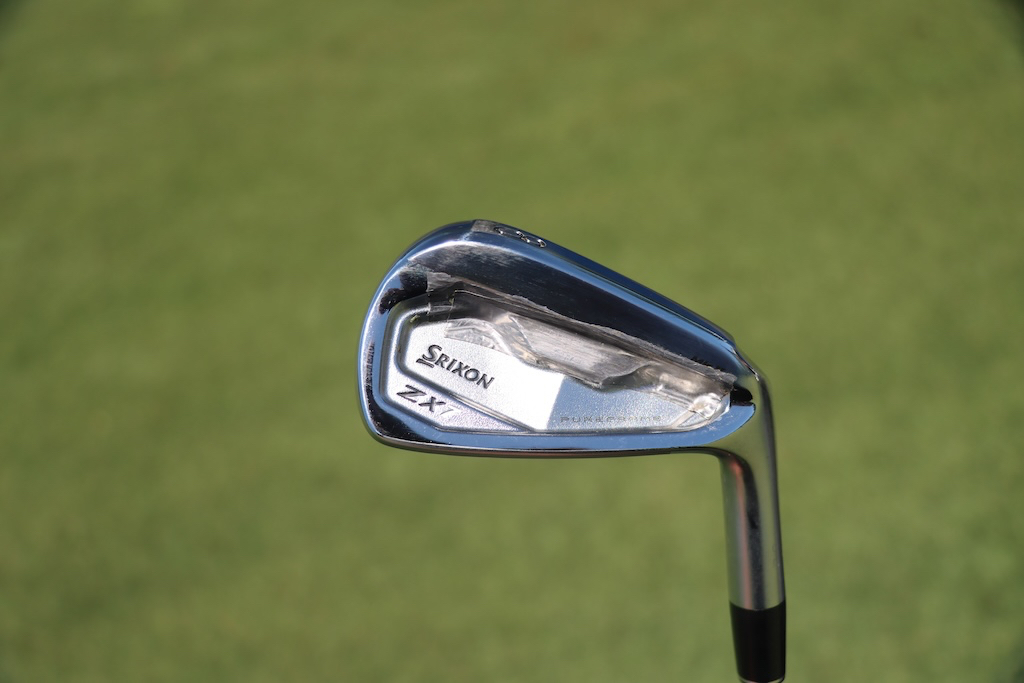
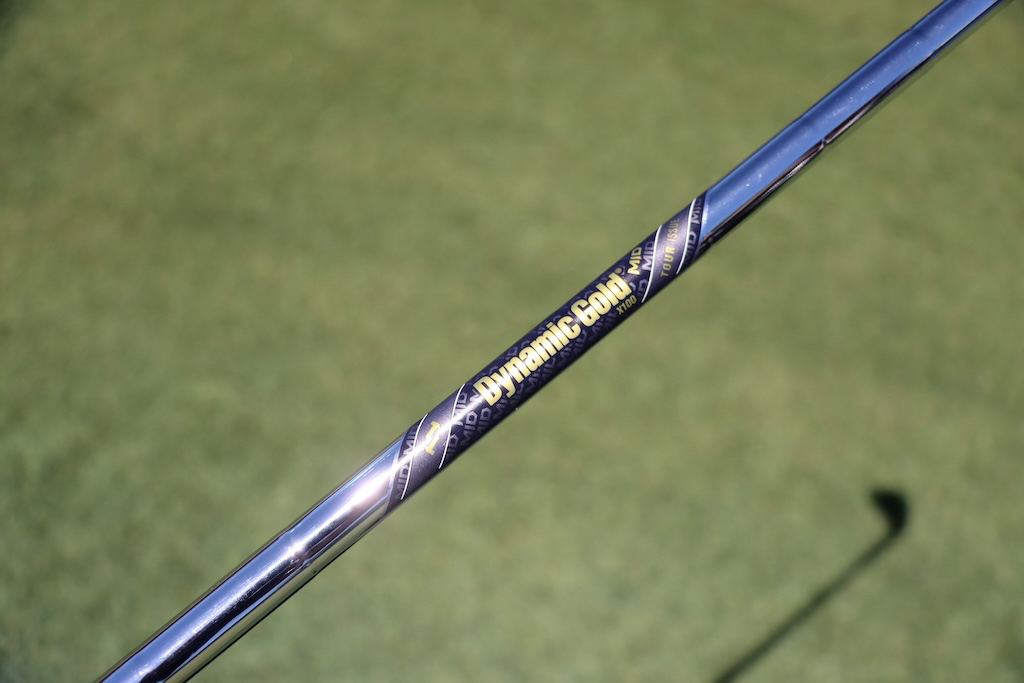
Wedges: Cleveland RTX6 ZipCore Tour Rack (50-10 MID, 54-10 MID, 58-10 MID, 60-06 LOW)
Shafts: True Temper Dynamic Gold Mid Tour Issue X100, S400
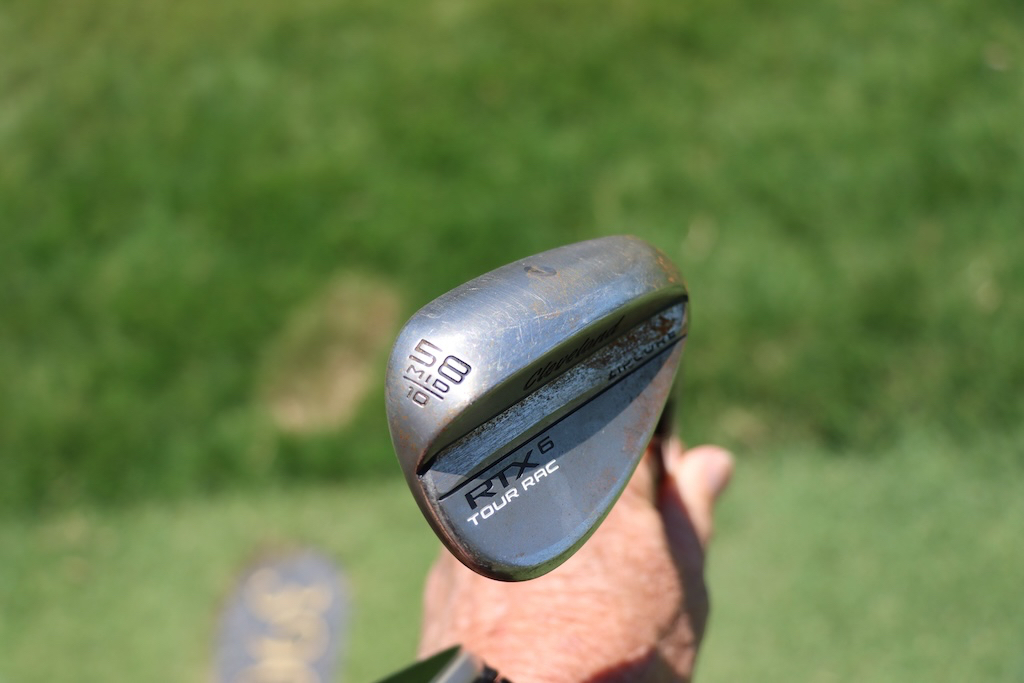
Putter: Scotty Cameron
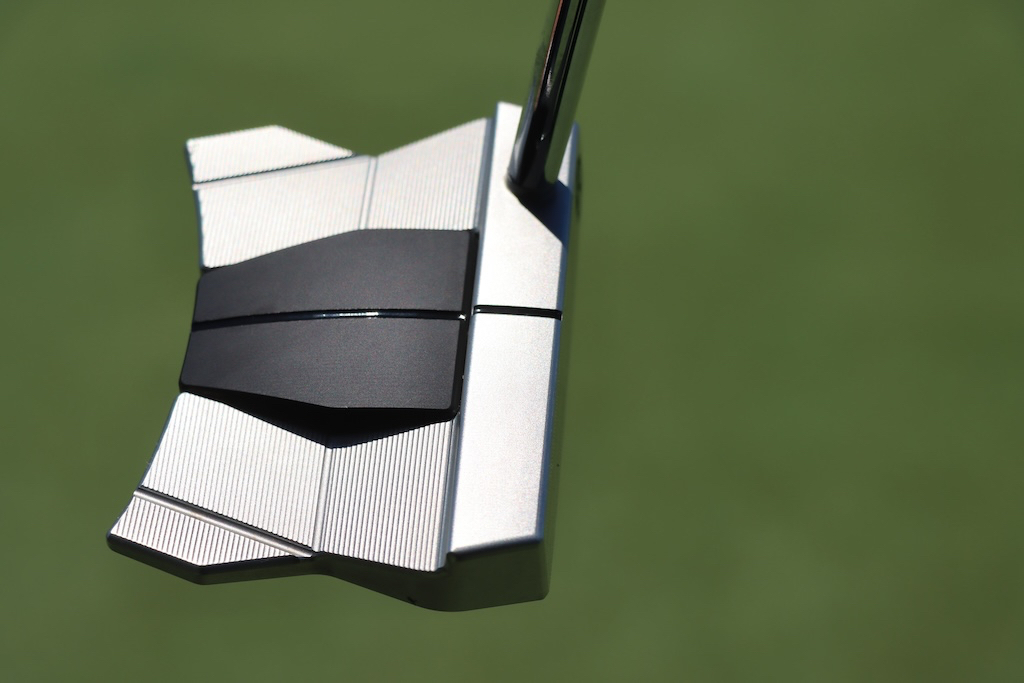
Grips: Golf Pride MCC Plus4
Check out more in-hand photos of Alejandro Tosti’s WITB in the forums.
- LIKE1
- LEGIT0
- WOW0
- LOL0
- IDHT0
- FLOP0
- OB0
- SHANK0
Whats in the Bag
Drew Brees WITB 2024 (April)
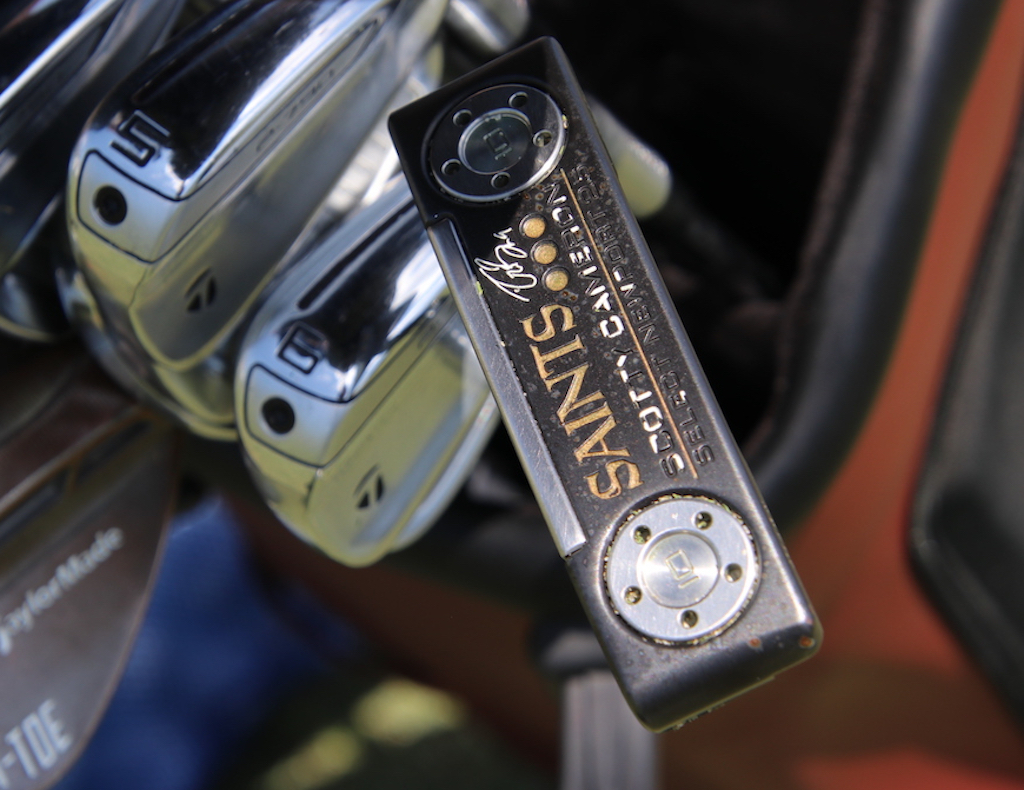
View this post on Instagram
Driver: TaylorMade Stealth 2 Plus (10.5 degrees)
Mini driver: TaylorMade BRNR Mini Copper (13.5 degrees)
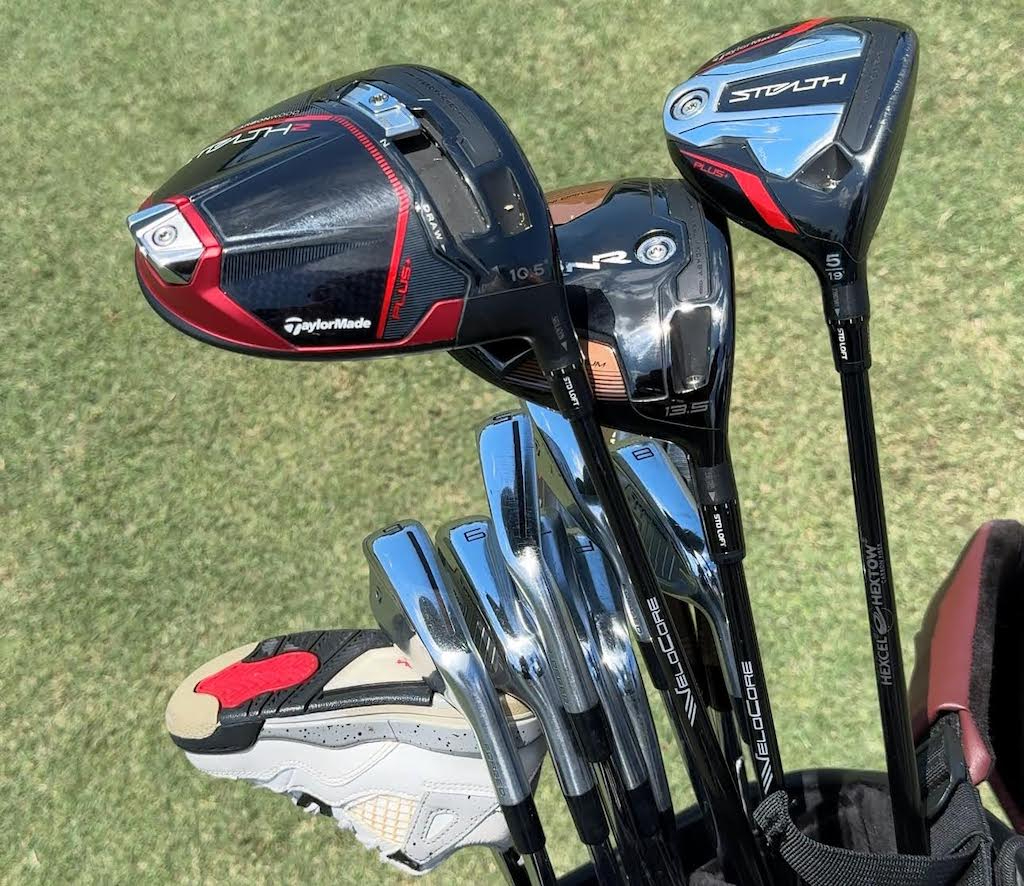
5-wood: TaylorMade Stealth Plus (19 degrees)
Irons: TaylorMade P790 (4-8, PW), TaylorMade P760 (9)
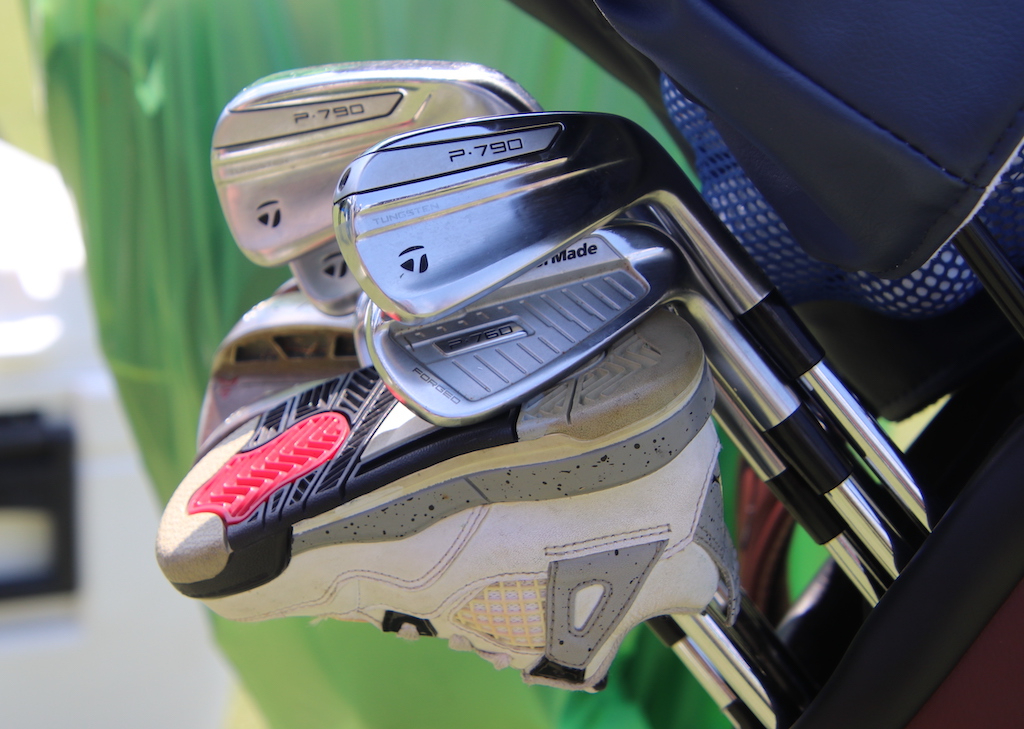
Wedges: TaylorMade MG Hi-Toe (52-09, 56-10, 60)
Putter: Scotty Cameron Select Newport 2 Prototype

Check out more in-hand photos of Drew Brees’ clubs here.
- LIKE1
- LEGIT0
- WOW0
- LOL0
- IDHT0
- FLOP0
- OB0
- SHANK0
-

 19th Hole2 weeks ago
19th Hole2 weeks agoDave Portnoy places monstrous outright bet for the 2024 Masters
-

 19th Hole3 days ago
19th Hole3 days agoJustin Thomas on the equipment choice of Scottie Scheffler that he thinks is ‘weird’
-

 19th Hole2 weeks ago
19th Hole2 weeks agoTiger Woods arrives at 2024 Masters equipped with a putter that may surprise you
-

 19th Hole3 days ago
19th Hole3 days ago‘Absolutely crazy’ – Major champ lays into Patrick Cantlay over his decision on final hole of RBC Heritage
-

 19th Hole2 weeks ago
19th Hole2 weeks agoTwo star names reportedly blanked Jon Rahm all week at the Masters
-

 19th Hole1 week ago
19th Hole1 week agoReport: LIV Golf identifies latest star name they hope to sign to breakaway tour
-

 19th Hole1 week ago
19th Hole1 week agoNeal Shipley presser ends in awkward fashion after reporter claims Tiger handed him note on 8th fairway
-

 19th Hole1 week ago
19th Hole1 week agoBrandel Chamblee has ‘no doubt’ who started the McIlroy/LIV rumor and why

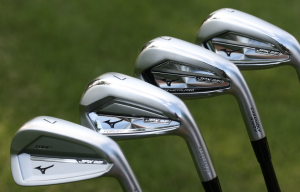
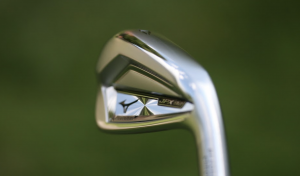
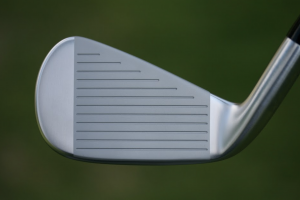
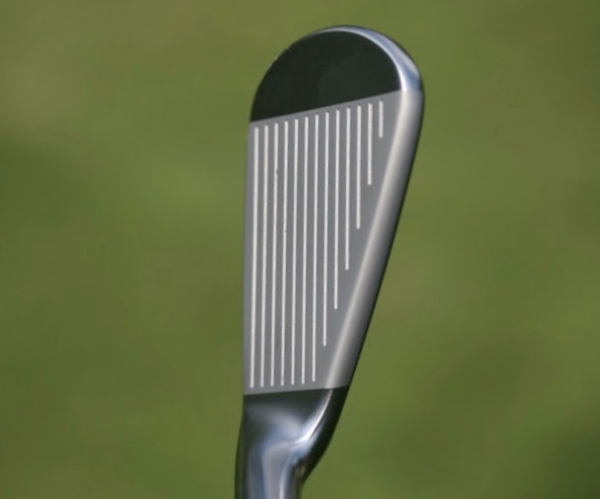
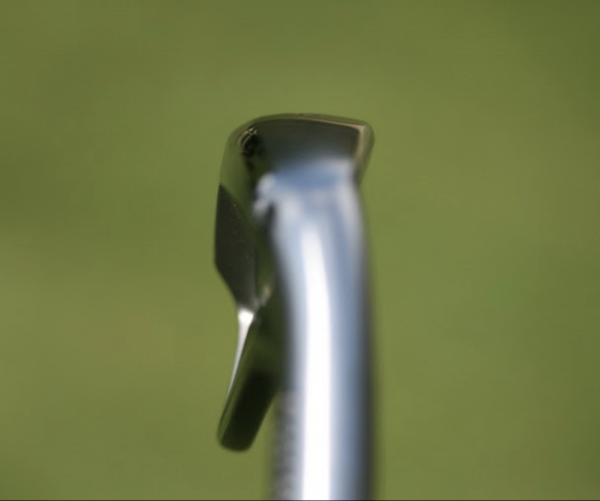
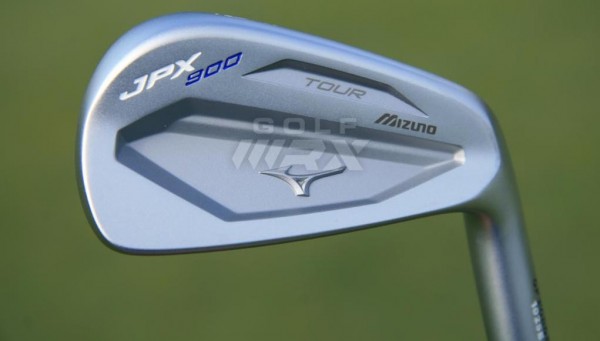
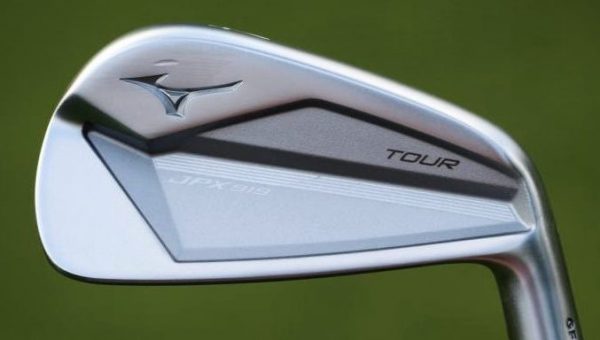
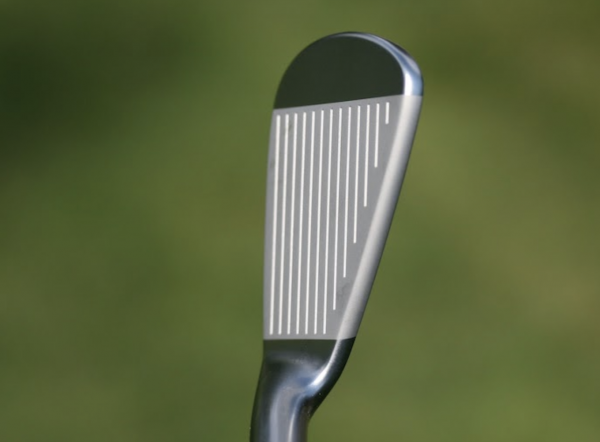
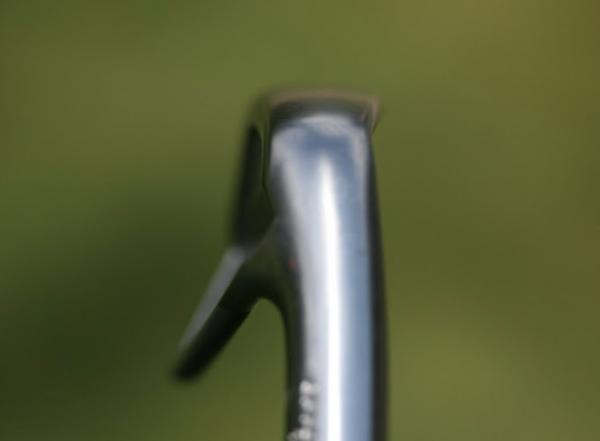
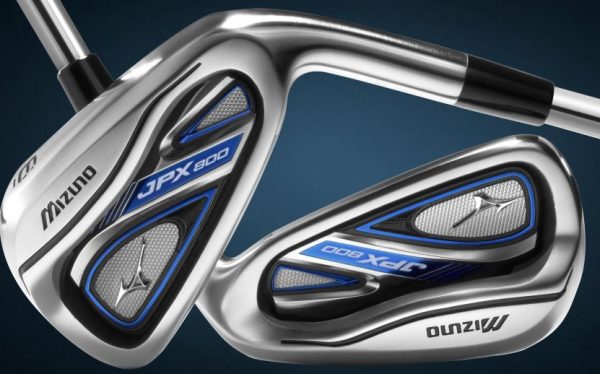
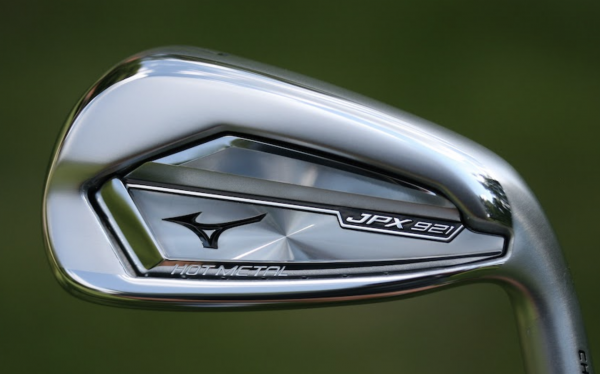
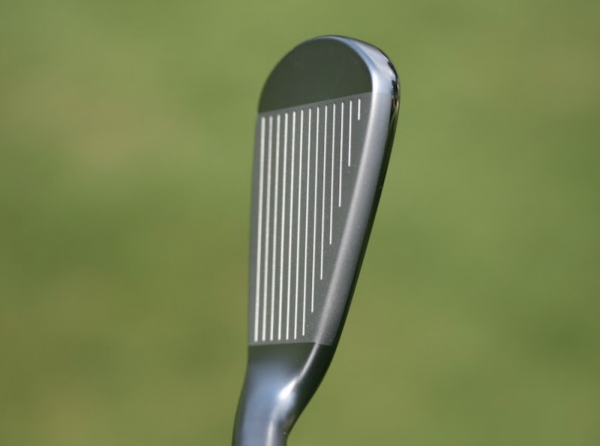
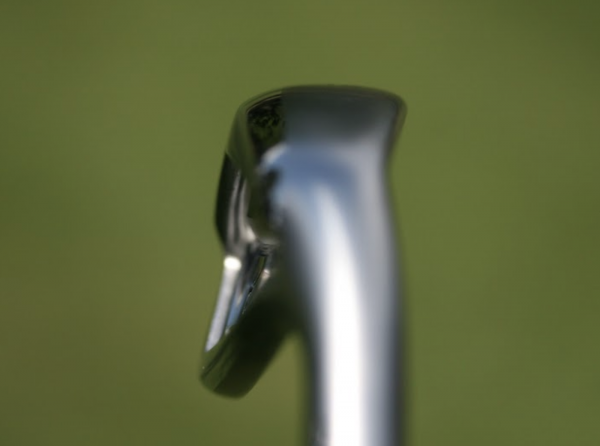
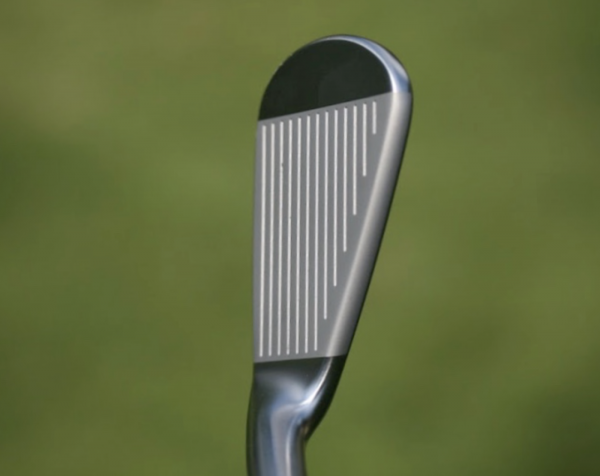
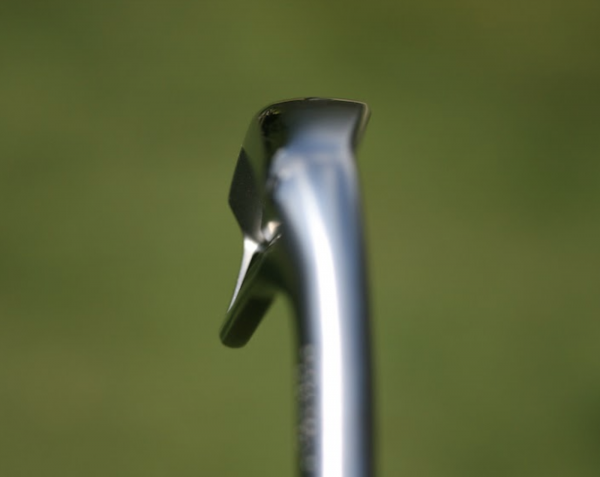


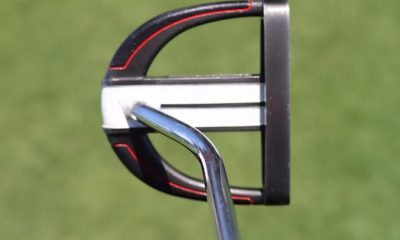







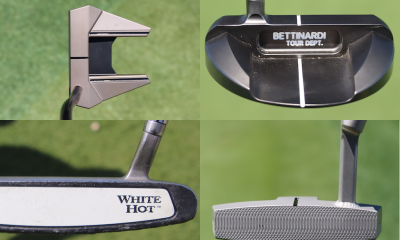



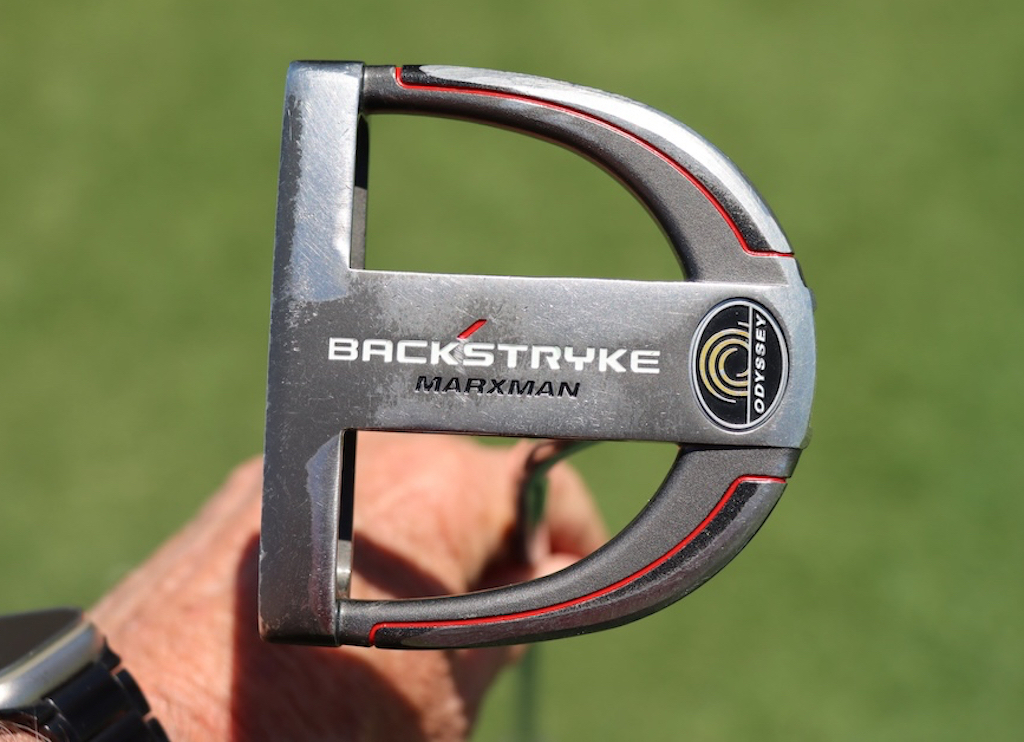









Pingback: Best irons in golf of 2021: The shotmakers – GolfWRX
Skip
Aug 15, 2020 at 9:47 am
Can they put a grip on straight tho?
Paul Runyan
Aug 10, 2020 at 9:33 pm
Good!
I was wondering how swing weight would be affected by cutting off 1/2 inch on the Tours.
Thank You Ryan!!!
Colm O Kane
Aug 10, 2020 at 3:14 pm
Why have they ignored left handers for hot metal pro again. Very disappointing
Andrew
Aug 10, 2020 at 5:13 pm
Concur! Even more disapointing is no Forged left handed version (which we have had in previous generation models.) WTF Mizuno!
JK
Aug 11, 2020 at 9:09 am
I agree completely. I think they will be offering a set of JPX921 SEL for lefties which will consist of a JPX 921 forged 4, 5 iron & 6-GW 921 Tour irons. That’s fine but all I really wanted was the 921 HM pro’s in LH. Not sure who is making decisions at Mizuno but as a Lefty I could not game a whole bag of Mizuno clubs because there is not enough options.
Carolyn
Aug 10, 2020 at 2:21 pm
More it looks like clubs have reached a point where making them work better is not a issue..seems going after making the good performing clubs look amazing is the selling point now. Getting to where I can hardly stand to look at the new Ads for new clubs every month…can have a hundred pair of shoes in my closet but filling the garage with clubs is getting old.
Bill Gates
Aug 10, 2020 at 10:23 am
whats wrong w/ the jpx ez’s?
A. Commoner
Sep 22, 2020 at 9:05 pm
For me, the feel was not Mizuno. Felt more like bargain store specials. Also, dispersion was quite disappointing. After 30 holes, they found themselves in a new home.
DB
Aug 10, 2020 at 10:17 am
These look nice. Only the Tour has the length listed – 38.5″ 5-iron and 36″ wedge. Looks like Mizuno have bumped their stock lengths quite a bit. Probably trying to adjust based on their typical orders.
Paul Runyan
Aug 10, 2020 at 10:08 am
JPX 921 5 iron at 38.5 inches? Isn’t that a little long for a standard tour iron?
Or am I reading this incorrectly?
It looks like length increased by over 1/2 inch from last years spec of 38.0 inches.
Anyone??
Ryan Barath
Aug 10, 2020 at 2:59 pm
The stock lengths have NOT been increased over previous models – there was shifting during data transfer when doing the graphics that caused the miss, and they have been updated to the correct information.